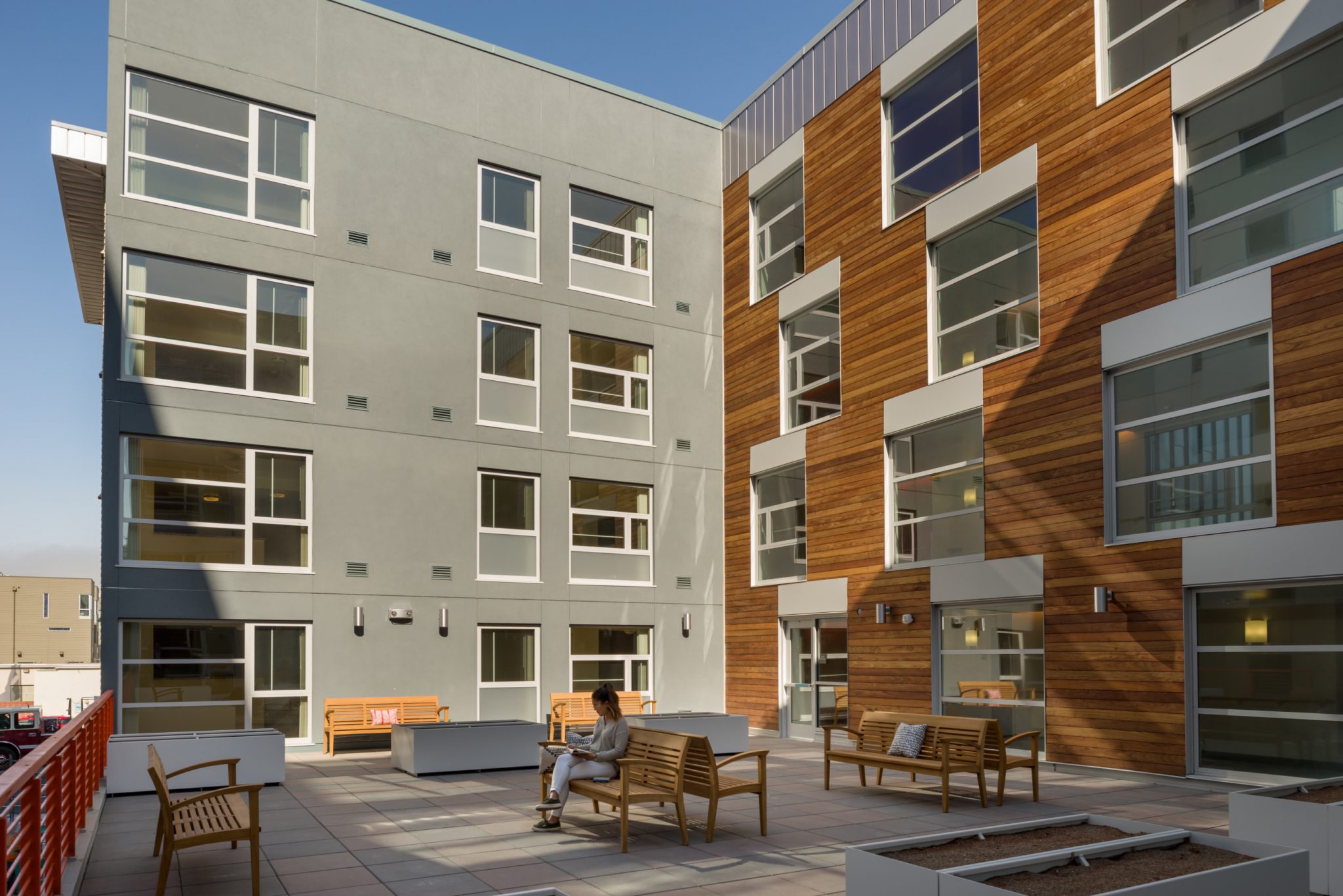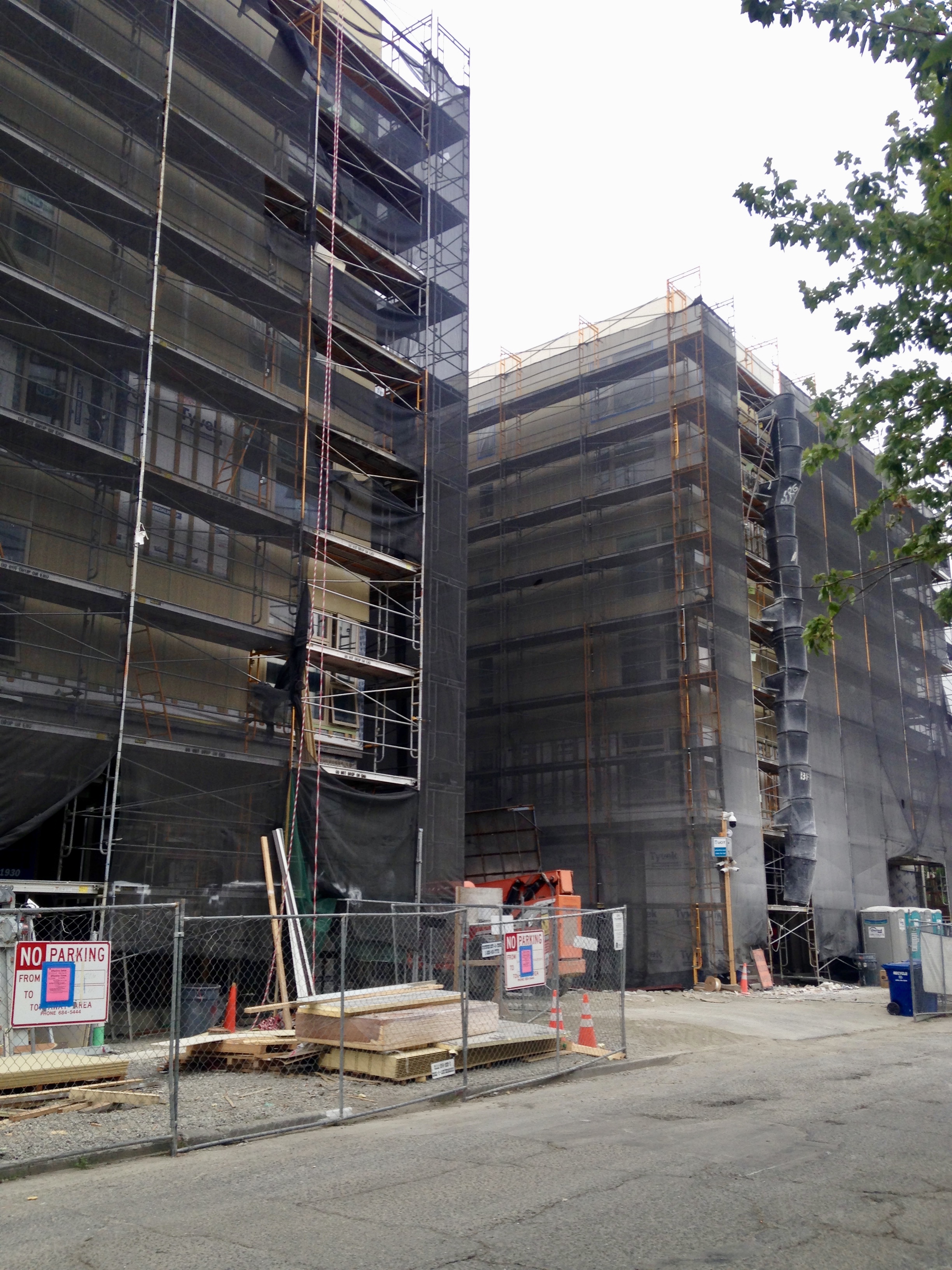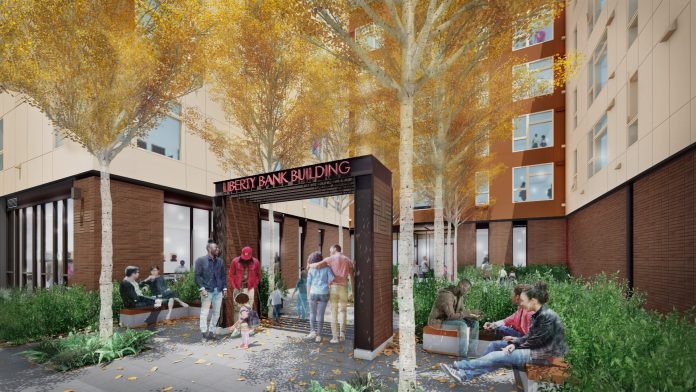Despite having origins in practices that contributed to segregation and exclusion, community resident preference policy has recently become a rallying cry amongst residents of high displacement communities in Seattle and the nonprofit organizations who advocate for them. At its heart, community resident preference policy aspires toward achieving a goal that most Americans find worthy and sympathetic: the right for established community members to remain housed in their communities. It has also increasingly become a tool by which cities have sought to return displaced residents and address the past harms of urban renewal and gentrification. But as noble those goals might be, when set against the challenging landscape of American housing policy and its history of discrimination, the creation of such policy becomes ripe with potential conflicts.
“Community resident preference policy is an issue with significant legal considerations,” said Emily Alvarado, who serves as Manager of Policy and Equitable Development at the City of Seattle Office of Housing. She believes the City needs to be “robust about acquiring data and filling in gaps that exist in data” as it extends its community engagement process and listens in on national dialogues centered on the policy.
“We want to balance deliberate and careful community-rooted policy making with an interest from community in doing this in a timely manner,” Alvarado said.
But as more construction cranes dot the landscape and more longtime residents watch their rents soar to unsustainable levels, the pressure is on to produce results quickly.
In late June, members of the Race and Social Equity Task Force and Equitable Development Initiative Interim Advisory Committee, wrote a letter to the city council in support of a community resident preference policy:
We are of the Central District, the CID, and Rainier Valley. These neighborhoods are our home, because we were not permitted to settle wherever we wanted to in Seattle due to redlining and covenants. We built strong communities with networks of civic institutions, houses of worship, and businesses that met our cultural needs. Our networks do not survive when our constituent base is dispersed, yet such networks are essential in an equitable city, and essential to ensuring that Seattle can become the safe and welcoming place for all that we aspire to be, but aren’t yet.
We need to do something now. We have discussed neighborhood preference for several years with our city partners at DPD and SOCR. But we have City funded projects coming on line in our neighborhoods in the very near future. How those are leased up could help counter displacement, but only if we take steps to make it so.
The interest and the urgency are clear; however, many questions about community resident preference policy remain.
So how exactly does community resident preference policy work? Where has it been implemented? And is it the silver bullet Seattle needs to combat displacement, or just another tool in the arsenal of affordability?
Community Resident Preference Policy: What to Know
Over the years a number of different municipalities have created community resident preference policies as a means of ensuring residents receive priority in affordable housing opportunities in their communities. The U.S. Department of Housing and Urban Development (HUD) provides local municipalities and their housing authorities with the flexibility to exercise discretion in establishing preferences that reflect their own community needs.
Because the Fair Housing Act makes housing discrimination illegal, HUD guidelines say “[r]esidency preferences must be consistent with civil rights laws and cannot delay or otherwise deny admission based on the race, color, ethnic origin, gender, religion, disability, or age of any member of an applicant family.”
On the surface, it may seem simple to adhere to HUD guidelines while enacting community resident preference policy, but the actual practice is difficult, as situations that have arisen in New York and San Francisco demonstrate.
“The best thing we know from other cities’ experiences is that we really need to be careful with the design so that the structure affirmatively furthers fair housing,” Alvarado said.
The Seattle Housing Authority also has been clear that it has an obligation to follow FHA and HUD guidelines. According to Kerry Coughlin, Director of Communications at SHA, in matters of housing policy, “It is clear that in most cases the federal guidelines will supersede anything the city can do.”
Understanding the potential complications, the Seattle City Council commissioned the Office of Housing to explore commonalities among community resident preference policies and report back to them with the research.
Their presentation identified some common approaches of community resident preference policies, which include:
- A portion of rental or ownership units are set aside for preferred applicants;
- Preferred applicants may be local residents, workers, former residents, or people who have been displaced;
- A lottery is used to select affordable housing residents/buyers;
- Policy must affirmatively further fair housing.
Many housing lotteries rely on points systems to help determine preferred applicants positions on affordable housing wait lists. In addition to local resident preference, points may be awarded for preferences such as age, disability, homelessness, veteran status, families with children, rent burdened, domestic violence, extreme low-income, and more. Ultimately it is up to the local government to establish a policy that both satisfies FHA’s requirements and meets the community’s individualized needs.
At this time it remains to be seen what a community resident preference policy might look like in Seattle and when it might be implemented.
“There are ongoing conversations about what that timeline will look like,” Alvarado said. “We are still developing a robust community engagement plan.” The plan includes “working closely with the Office for Civil Rights” to achieve targeted “engagement with most impacted communities” as well as “the fair housing community at large, including the property managers and others who are on the front lines of affordable housing.”
Segregation and Community Resident Preference Police in NYC
More than anywhere else, New York City may be the best example of how challenging it can be to balance community needs against the need to affirmatively further fair housing. In 1988, NYC became the first major municipality to adopt community resident preference policy after low-income residents demanded that they had a right to remain in their communities and benefit from community redevelopment. The NYC policy currently requires fifty-percent of affordable housing units be set aside in the housing lottery for residents of local community districts. Applicants must meet local and federal eligibility requirements in regards to income, credit, and housing court history, and NYC residents as a whole receive priority over nonresidents.
Advocates such as Rafael Cestero, President and CEO of The Community Preservation Corporation, believe “community preference policy reflects a belief that redevelopment is not just about building affordable housing, but about building communities” and in order “[t]o rebuild the fabric of a neighborhood, it is essential to start with the people who are there, to recognize the claims of those who want to stay and to participate in that redevelopment.”
But critics argue that the policy has bolstered racial and economic segregation in NYC by making it difficult for people who rely on public housing to move to higher opportunity districts. In 2015, three female African American plaintiffs filed Winfield v. City of New York making the claim that the community preference policy excluded them from being able to attain housing in Manhattan districts that offered better housing, work, and educational opportunities than the districts where they resided in Brooklyn and Queens.
The Winfield v. City of New York has so far not provided any new guidance on the application of community preference policy. As a whole, support for maintaining the policy in its current form runs high amongst the City Council whose members “would simply reject new affordable housing if it did not advantage their local constituents.” Yet Vicky Been, former commissioner of New York City Department of Housing Preservation and Development, admitted in a deposition hearing that the community preference policy would run counter to the goal of reducing “racial segregation to the maximum extent possible.”
Despite its diversity, New York City remains one of the most segregated cities in the US. NYC is divided into 59 community boards, each with its own housing lottery. An analysis of census data from 1990, 2000, and 2010 reveals that patterns of segregation across the community boards have remained consistent despite some demographic shifts, such a significant increase in Hispanic and Asian populations.
According to the plaintiffs in Winfield v. City of New York, “The result [of the community preference policy] is that entrenched segregation is actively perpetuated, and access to the neighborhoods in this city with high quality schools, health care access, and employment opportunities; well-maintained parks and other amenities; and relatively low crime rates is effectively prioritized for white residents who already live there and limited for African-American and Latino New Yorkers who do not.”
Innovative Policies Achieve Mixed Results in San Francisco and Portland
In San Francisco a system of community preference points has been created to make both rental and ownership housing available to low-income residents. The intention of the preference points system is to “give current and former San Francisco residents a better chance of living in the City.” Preferences exist for both City-sponsored housing and project-specific housing.
The policy got off to a rough start. In 2016, the city of San Francisco found itself entangled in lawsuit against HUD after the agency objected to how the City planned to give preference to rental applications from low-income African American seniors for a housing facility in the Western Addition. In the lawsuit, HUD officials claimed the neighborhood preference plan violated federal fair housing laws by limiting equal access and perpetuating segregation in the Western Addition, a historically African-American neighborhood.
Ultimately, San Francisco officials successfully appealed the lawsuit by making changes to the preference policy that satisfied HUD, but their experience remains a cautionary tale.
Amid the changes included to ensure the policy met HUD requirements, policy-makers were able to write an a provision that ranked the “preferences” held by applicants for city-sponsored housing with people having received a Certificate of Preference, or COP, placed at the top of the list. According to Lottery Preference Programs website, COPs are awarded to former San Francisco residents who were displaced from the majority African American neighborhoods of Western Addition and Hunters Point in the 1960s and 70s during the SF Redevelopment Agency’s federally-funded urban renewal program. In this way, the city was able to maintain its original objective of ensuring low-income African American senior residents of the Western Addition would have priority for affordable housing in their neighborhood.
Other preferences are awarded to people eligible for specific programs such as the Displaced Tenant Housing Preference Program or the Neighborhood Resident Housing Preference Program. These programs are also ranked by priority.
Points are awarded for other statuses as well. A new program started in 2018 grants artists a special status in the housing lottery, similar to that of veterans and people with disabilities. For readers wishing to dive a bit deeper, a complete overview is available Mayor’s Office of Housing and Community Development Housing Preferences Lottery and Procedure Manual.

However, the reality is that demand in San Francisco far outstrips the amount of affordable housing available to residents who qualify for preferences. Returning to the example of the senior housing development in the Western Addition, a total of 25 African American households won spots in the 98-unit development. Of the approximately 6,000 applications received, about 9 percent (549) were from African Americans. Without the priority ranking of the Certificate of Preference, only 14 African American households would have won spots in the lottery.
Advocates say that this is proof that community resident preference is working, but critics argue that the larger issue of affordability is so crushing that at best community resident preference policy is negligible as an anti-displacement tool.
* * *
In 2015, Portland, Oregon won accolades for creating an innovative policy known as the “N/NE Strategy” intended to “un-gentrify” its N/NE neighborhoods, which historically housed Portland’s African American community. These neighborhoods had seen a significant decline in African American residents that was traceable to two specific periods, one in the 1970’s and another in 1990’s, in which the area had undergone targeted urban renewal, resulting in widespread use of eminent domain to acquire commercial and residential properties.
Within the community resident preference policy, was an innovative “right to return” clause, which created a preference point system allowing for former residents who had lost properties due to eminent domain and their descendants to qualify for the highest amount preference points in an affordable housing lottery encompassing both rental and ownership housing.
In addition, preference points are awarded to residents whose current or former address “falls within one of the identified areas where City plans had a destabilizing effect on long-term residents.” Additional points are awarded if the applicant’s parent or grandparent also resided in one of the identified areas. “It’s the ancestral clause that makes Portland’s Right to Return groundbreaking,” wrote Melanie Sevcenko for The Guardian UK in 2018.
However, despite the international attention it has received, many Portland residents believe that the community resident preference policy has not succeeded in achieving its goals.
The Portland Mercury has reported on how overall the policy does not seem to be returning displaced residents. Since its passage in 2015, of the 52 households that were approved for down payment loans as part of the preference points system, only five households purchased a home.
In fact, the N/NE Strategy oversight committee declared in its 2017 annual report, “To date we have made little progress.”
One of the problems seems to be that the affordable housing created so far is either unappealing or unachievable to people who qualify for preference points. A development of tiny affordable condos, has failed to attract displaced residents as buyers. In fact, none of the 52 applicants rated it as a first choice and only four rated it as a backup choice. And while over 1,000 households applied for the first round of 65 spots for homeownership programs, only a fraction met the income and credit requirements.
Officials are hopeful that in 2018 with construction nearing completion on more rental developments and larger condo unit developments that there will be an increase in residents who both qualify as applicants and register interest in the projects.
What Else Can Seattle Do To Fight Displacement?
Community resident preference policy has attracted a lot of attention in part because nonprofit housing developers often seek to create housing for the specific communities they serve. They have a vested interest in ensuring that their communities remain intact. However, community resident preference is far from the only anti-displacement tool out here.
“Affordable housing works in and of itself as an anti-displacement tool,” Alvarado said. “A lot the work we do is fundamentally about addressing displacement. Low-income people are disproportionately people of color. To the extent that we can provide affordable housing opportunities to people in our city we already make an impact in the region.”
Affirmative marketing strategies are also another anti-displacement method with a registered track record of success. Affirmative marketing ensures that people from impacted communities are able to be informed and apply for the housing they are eligible for.

Recently the City of Seattle passed affirmative marketing requirements for all buildings that receive tax exemptions including, Multi-Family Tax exemptions, or MFTE. These buildings are required to do additional outreach and engagement with vulnerable and affected populations. “We will be tracking the outcomes of that new requirement with the hope that it increases racial equity,” Alvarado said. This change may have considerable impact since one quarter of the market rate units at Yesler Terrace, SHA’s largest housing development, will be MFTE units that are subject to rent and income restrictions.
Lastly, the City of Seattle has recognized that keeping people in their homes is itself a powerful anti-displacement strategy. To that end, the Office of Housing provides home repair loans and grants. “A modest grant or loan from us can make sure the household is able to remain stable in their community and pass on their asset,” Alvarado said. Recently the City has expanded the program and made low cost rehab loans available to multi-family property owners who agree to keep a portion of their units affordable.
Looking at the bigger picture it seems clear that while community preference policy may be beneficial to curbing displacement in Seattle, it is just one more tool to include in a “well-rounded anti-displacement tool kit.”
Still community advocates are looking to the City to produce a community resident preference policy and implement it soon. “Help us move this conversation from plan to action,” their letter concludes, “we are out of time.”
Natalie Bicknell Argerious (she/her) is a reporter and podcast host at The Urbanist. She previously served as managing editor. A passionate urban explorer since childhood, she loves learning how to make cities more inclusive, vibrant, and environmentally resilient. You can often find her wandering around Seattle's Central District and Capitol Hill with her dogs and cat. Email her at natalie [at] theurbanist [dot] org.


